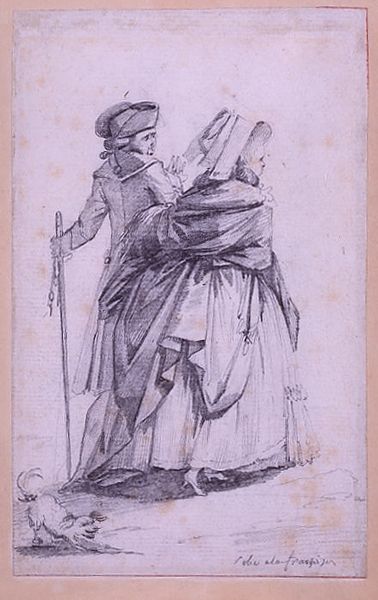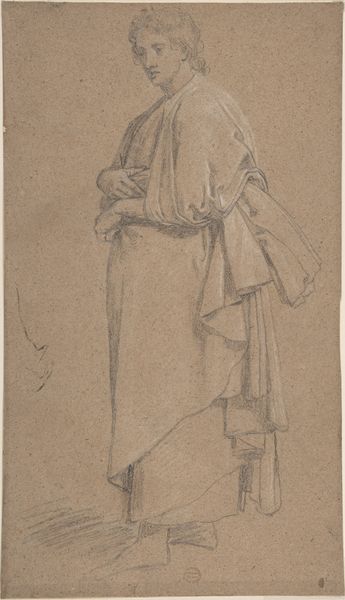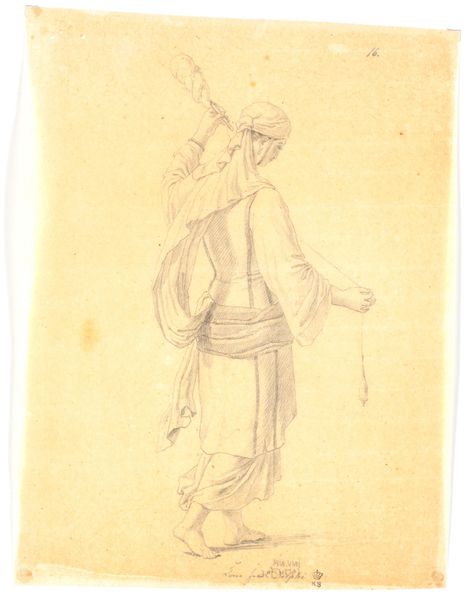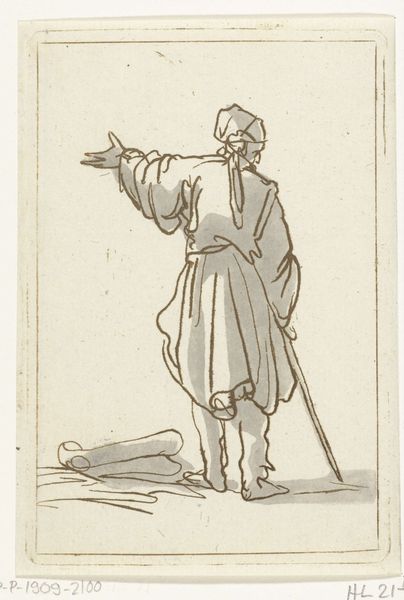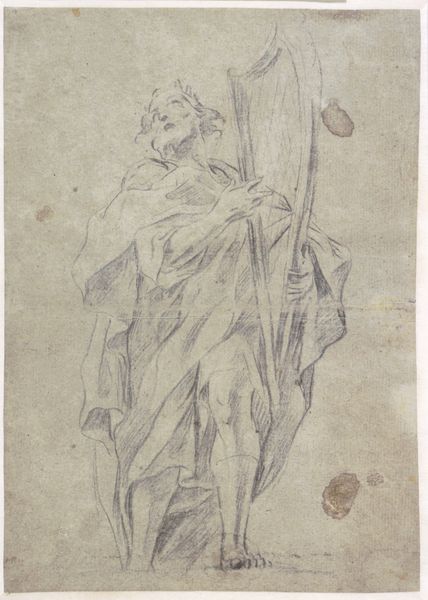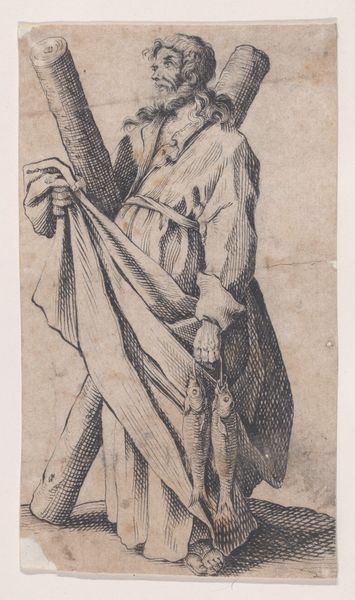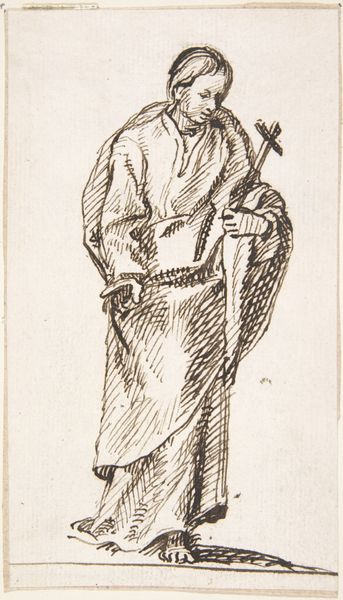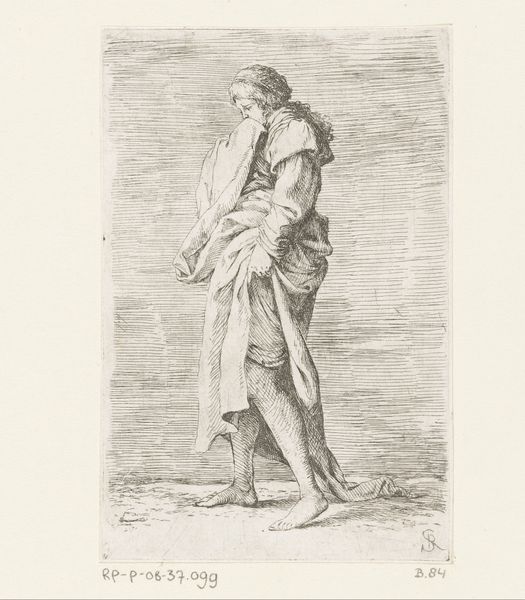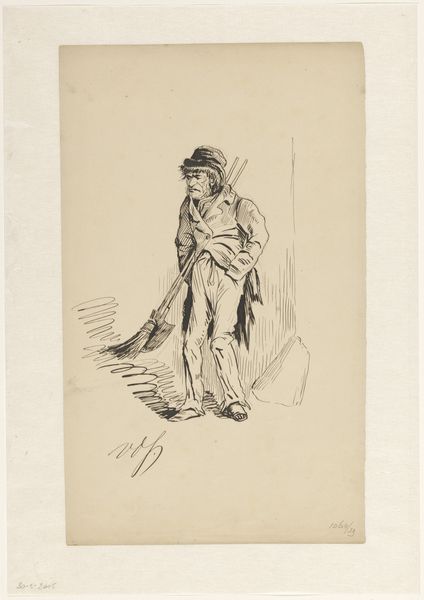
drawing, pencil
#
portrait
#
drawing
#
pencil sketch
#
romanticism
#
pencil
#
portrait drawing
#
genre-painting
Dimensions: 215 mm (height) x 159 mm (width) (bladmaal)
Curator: What a serene scene. Martinus Rørbye captured this gentleman in his drawing "Kostume fra Thesalien" dating back to 1835. The work currently resides in the Statens Museum for Kunst. Editor: It’s such a peaceful sketch. The soft pencil lines give it a quiet, contemplative feel. I'm curious about the paper; it looks like it may have yellowed some with age. Curator: It does. This pencil drawing gives us a glimpse into the romanticized portrayal of genre painting within that era. The subject's clothing, the very deliberate pose, are they not reflective of orientalism’s projections onto "the other?” How is his identity and his land consumed by a European sensibility? Editor: I'm with you there. The choice of pencil, the way the light subtly defines the folds of the fabric, suggests an attention to texture and material details characteristic of a materialist reading. It emphasizes how these cultural artifacts—clothing, pipes—became commodities, fetishized within a colonial framework. How do you view this? Curator: It is that same lens that emphasizes gender constructs here. He’s depicted in a passive, almost decorative role. Consider the phallic symbolism of the pipe he delicately holds. The sketch highlights European male gaze's desire, yet, his stance communicates perhaps an ambiguous invitation? A subversion of power dynamics encoded within these subtle gestures of orientalism? Editor: I appreciate that read! And I wonder about the availability of drawing materials at the time and what the cost was? That in itself shows some level of power for the artist as he uses available goods to construct, define, and sell images of someone removed from that cultural production. What can he afford to capture, and how does that become tied to its perceived exoticism? Curator: Those elements highlight what the art production process represented at that specific moment and place. Considering the artistic intention is the start of critical thought in art's function in shaping history's narratives. Editor: Yes, that tension is what makes it so engaging, the way it lays bare those material and social relationships inherent in the creation and consumption of art. Curator: Absolutely, art gives us these intimate confrontations and hopefully provokes the start of change, making this, more than a mere costume study. Editor: Indeed, a simple pencil sketch, pregnant with implications about power, representation, and the commodification of culture through art-making itself.
Comments
No comments
Be the first to comment and join the conversation on the ultimate creative platform.
